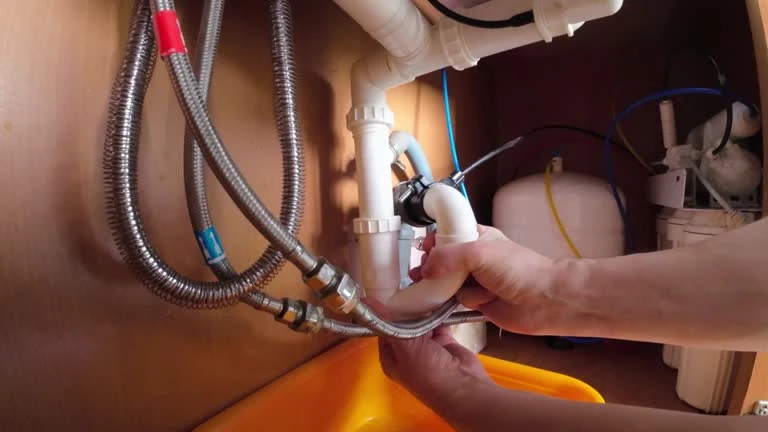A washing machine inlet valve plays a crucial role in ensuring your machine works efficiently by controlling water flow into the drum. Proper maintenance can prevent many common issues, such as leaks or a malfunctioning washer. In this article, we’ll explore how to maintain your washing machine’s inlet valve to keep it running smoothly for years.
Understanding the Inlet Valve’s Role
The inlet valve controls the water flow into the washing machine. It opens when the machine signals the need for water and closes when the desired water level is reached. Without this valve, the washing machine would not fill with water properly, leading to poor washing performance or damage to the appliance. The valve also prevents overflows and controls the water pressure, ensuring that the machine runs efficiently during each cycle. Without a properly functioning inlet valve, your washing machine may struggle to achieve optimal washing results or even face leakage problems. Understanding its function helps you appreciate why regular maintenance is essential.
Signs of a Malfunctioning Inlet Valve
There are several signs that your washing machine’s inlet valve might not be functioning correctly. If your washer doesn’t fill with water, overfills, or experiences water leakage, the valve could be the cause. Another red flag is if the machine takes too long to fill or if it doesn’t stop filling at the appropriate level. Malfunctions can result from dirt, debris, or mineral buildup inside the valve or worn-out valve components. In some cases, a malfunctioning valve may also prevent the washing machine from draining properly, leading to excessive water retention in the drum after a cycle. If you experience any of these issues, it’s essential to check the valve immediately.
Checking for Clogs in the Valve
One of the most common issues with inlet valves is clogging due to mineral buildup or debris. Hard water, in particular, can cause mineral deposits to accumulate inside the valve, restricting water flow. This blockage can lead to poor washing performance or cause the machine to fill slowly. To inspect the valve for clogs, turn off the water supply and disconnect the washing machine from the power source. Remove the inlet valve filters, and carefully inspect them for any visible buildup. Use a soft brush or water to clean the filters and remove any debris that may be obstructing water flow. Make sure to clean both the filter and the surrounding area to allow for the free flow of water during washing cycles.
Inspecting the Valve for Leaks
Leaks around the valve area are another indication that your inlet valve may need attention. If you notice water pooling around the base of the washing machine or if the valve area feels damp, you could be dealing with a leak. Inspect both the hose connections and the valve itself to identify the source of the leak. Over time, rubber seals and washers can wear out, causing water to escape from the connections. If the leak persists after tightening the connections, consider replacing any damaged components. Addressing leaks promptly is crucial to prevent water damage to your floors or surrounding appliances.
Checking the Water Pressure
The water pressure to the washing machine can impact the inlet valve’s function. Low water pressure may cause the valve to malfunction or fail to open properly. This could result in the washing machine taking longer to fill or not filling completely. On the other hand, excessive water pressure can put strain on the valve and cause it to fail prematurely. To ensure your washing machine operates correctly, check the water supply pressure. It should typically range between 20 to 120 psi. If the water pressure is too low, try adjusting the pressure regulator or consult a plumber to fix any plumbing issues. Maintaining the right pressure is essential for the inlet valve to function effectively and for your washing machine to run at optimal performance.
Cleaning the Inlet Valve
Over time, dirt, dust, and grime can accumulate inside the inlet valve, affecting its performance. A dirty valve may cause improper water flow or slow filling times, making your washing machine less efficient. Regular cleaning can help maintain the valve’s function and prevent long-term issues. To clean the valve, use a mild detergent and a soft brush to scrub the valve’s exterior. Be sure to clean the valve filter and surrounding parts as well. This cleaning process ensures the valve operates smoothly and helps prevent the buildup of mineral deposits that can clog the system. Cleaning the valve every few months can extend its lifespan and improve the overall performance of your washing machine.
Testing the Valve’s Functionality
Once you’ve cleaned and inspected the inlet valve, it’s time to test its functionality. After reconnecting the water supply, turn on the washing machine and run a short cycle to check whether the valve is opening and closing correctly. Pay attention to how quickly the machine fills with water. If the water level rises to the desired point without any issues, the valve is likely functioning properly. Also, listen for any unusual noises or signs that the valve might be malfunctioning. If the valve does not operate correctly after cleaning and inspecting it, you may need to replace the valve. Regular testing helps ensure that the inlet valve continues to work efficiently and prevent unexpected issues during washing cycles.
Replacing the Inlet Valve
If your inlet valve shows signs of damage or still malfunctions after cleaning, replacement may be necessary. In some cases, the valve may be too worn out to repair, and replacing it with a new one is the most practical solution. To replace the valve, purchase a compatible replacement model from a reputable supplier. Follow the manufacturer’s instructions to remove the old valve and install the new one. Ensure that all hose connections are tight and secure. Once installed, test the new valve to confirm that it is functioning correctly. Replacing a faulty inlet valve is a relatively simple and cost-effective solution to ensure that your washing machine continues to operate smoothly. If you’re not comfortable doing the replacement yourself, consider hiring a professional plumber or technician.
Conclusion
The inlet valve is an essential component of a washing machine, and proper maintenance can prolong its life and improve washing performance. Regularly check for clogs, leaks, and other signs of malfunction. Cleaning the valve and ensuring the water pressure is at optimal levels are important steps to prevent issues. If necessary, replace the inlet valve to restore your washing machine’s performance. By following these maintenance tips, you can avoid expensive repairs and keep your washing machine functioning at its best for years to come.
IFAN Products international standards
IFAN products strictly adhere to a comprehensive range of international standards, encompassing ISO 15874, EN 15874, ASTM F2389, DIN 8077/8078, GB/T 18742, NBR 15884, ISO 15494, EN ISO 15494, GB/T 19472, NBR 15494, ASTM 2846 (501), DIN 8079/8080 (502), ASTM F441/F441M SCH80 (503), DIN (504), DIN (505), GB/T 18993, AS/NZS 1477, CSA B137.6, NSF/ANSI 14, TIS 17-2532/1131-2535, BS 3505, BS 4346 (801), ASTM D1785 SCH40 (802), ASTM D1785 SCH80 (803), DIN (804), GB (805), GB (806), GB(901), DWV(902), ASTM D2665 (903), along with ASTM D2241, D2665, D2729, and F441/F441M series, ISO 1452, EN ISO 1452, DIN 8061/8062, GB/T 10002, AS/NZS 1477, JIS K6741, CSA B137.3, and other national and industry norms.
Connect
IFAN is a Chinese manufacturer of plastic pipes, fittings and valves with 30 years of experience. If you are interest in IFAN copper fittings, copper valves, plastic pipes and fittings, please contact us. IFAN offers you a variety of standard pipes to meet your specific needs. Click below to learn more about IFAN’s wide range of affordable and cost-effective valve products and piping system related products.
We will reply your email or fax within 24 hours.
You can call us at any time if there is any question on our production.
For more information,pls visit our webside https://waterpipefitting.com/
Pls Mailto: [email protected]
Whatsapp: +8615088288323














Recent Comments